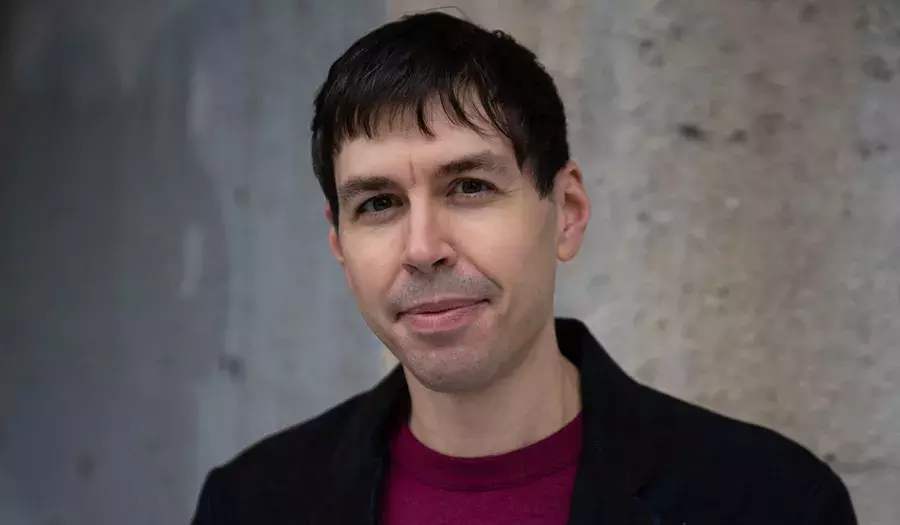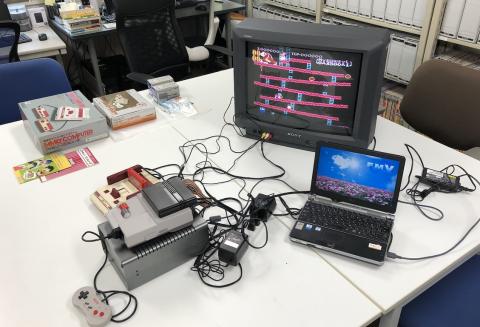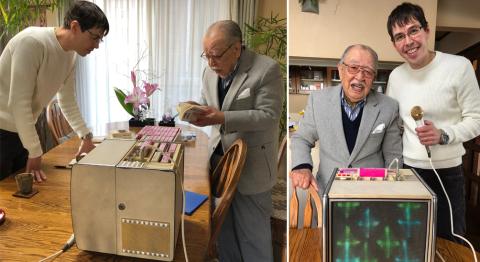
Matt Alt is a writer, translator, and speaker who has lived and worked in Japan since 2003. With his wife and collaborator Hiroko Yoda, he founded AltJapan Co., Ltd., a company that specializes in localization – translating and adapting Japanese-language video games, comic books, and other media for international audiences. Alt also writes for publications from the New Yorker to the Economist, and for several years, he co-hosted the popular NHK World television show “Japanology Plus” along with Peter Barakan. Alt “leaps” into rarely seen aspects of Japanese society (sometimes literally, like the time he jumped out of a helicopter with Japan’s mountain rescue team). More recently, he wrote the book “Pure Invention: How Japan’s Pop Culture Conquered the World”, which explores phenomena from the Sony Walkman to emoji, and how they shaped the way global citizens live and dream today. In a brief conversation with JAPAN HOUSE Los Angeles, Alt reflects on his book, the evolution of Japanese soft power, and lessons from Japan for a post-COVID world.
This interview has been edited and condensed for length.
Growing up in America, what was your earliest exposure to Japanese pop culture? How did they inspire your future career path?
I grew up in the suburbs of Washington, D.C. in an era when there wasn't a lot of Japanese content available on the American marketplace – and what existed was heavily altered to the specifications of American producers, like Transformers, where you could barely tell the source. But as a kid in the late 1970s, I was given a Japanese robot toy called the “Shogun warrior” which had Japanese writing on its stomach, and I became obsessed with this writing. I asked my Mom where it came from, and she said “Japan”, so the idea that somewhere on the other side of the ocean was a nation of people who made robots really sparked something in me.
For those who don’t know, what does a localization company do, and what new perspective did your work in that field give you on the pop culture you loved?
With my wife Hiroko Yoda, we moved here in 2003 and began helping Japanese companies and content creators translate their visions, both metaphorically and literally, for consumption abroad. We spent a good decade and a half doing almost nothing but that, and it was a wonderful experience that gave us a view into the heart of this pop cultural machine that most people don't get to see. People all around the world consume Japanese pop culture, but actually getting to see it being made is pretty difficult to do – big companies are very secretive about what’s happening on the development floor, manga artists tend to be fairly reclusive people, etc. That backstage view is part of what spurred us to begin writing articles for magazines and newspapers, as well as co-authoring books together, like our series on supernatural figures like yokai (traditional monsters) and other aspects of Japanese folklore.
(Note: For readers interested to explore more about the fascinating history of yokai, they feature prominently in artists’ works in JAPAN HOUSE Los Angeles’ current exhibition “NATURE/SUPERNATURE: Visions of this World and Beyond in Japanese Woodblock Prints”. Explore this section of the exhibition, including a flip book of Japanese folklore, and stream a recording of the lively conversation “Yokai Past and Present”).

How did you end up co-hosting the “Japanology Plus” show on NHK, and what did you like most about it? If you had to choose, what is your favorite episode?
The main host is this amazing guy named Peter Barakan, who is a walking encyclopedia of world music and was a lyricist for the Japanese pop group YMO in the 1980s. I came on the show once as a guest, and we had a blast. Afterwards they asked me if I might like to join as a “sidekick” to Peter in a new format. My role was sort of the “Robin” to his “Batman”, so while he would be in the studio interviewing some public official or academic, I would be out in the field doing something more offbeat. In my favorite episode, I found myself getting thrown out of a Blackhawk helicopter over a mountain in a simulated mission with the Japanese Fire Department rescue team. The show took me to a lot of places that average people never get to see, like going beneath the shinkansen tracks with a maintenance crew, and it was really one of the highlights of my life here.
In your book “Pure Invention: How Japan’s Pop Culture Conquered the World”, you explore Japan’s pop culture not only through its influential products, but also its “soft power” impact on global lifestyles as a whole. How did you come up with the book’s theme?
I was initially thinking of titling the book “Generation J”, because I feel there's a “before” and “after” for the Japanese pop cultural influence on the global fantasy sphere. Whether you're Generation X or a millennial, the past few generations grew up in a world shaped by these Japanese products and ideas. In a way, it’s a reversal of what happened in Japan in the post WWII era, when America emerged as this rather unlikely aspirational presence on the global stage, and young Japanese grew up seeing Jeeps driving around and jazz music being played, and the concept of America was much larger than life. And for non-Japanese growing up in the 1970s and 80s, with the global spread of anime, Nintendo systems and beyond, Japan took on that same role.
How did you decide which cultural industries/phenomena to explore, and which did you want to cover but had to leave out?
In selecting subjects for the book, I came up with a metric to define them which I call the three “in”s. They had to be inescapable in the sense that they were huge hits, like Nintendo was everywhere in the 80s. They had to be inessential, things that we bought not because we needed them, but because we wanted them. For me, this is what separates something like Cup of Noodles, a great Japanese product that I love, from a “fantasy delivery device”. And I’m more interested in the things we buy because we want them. And finally, they had to be influential: they had to change our view of Japan or change the way that we looked at our own lives, or in many cases, both.
Of course, it was hard to decide and I had to leave many things out. I really wanted to devote a chapter to the Power Rangers because America is now living in a Power Rangers world – like, adults mainly want to see superhero movies, they’re a dominant form of entertainment, and I’m convinced that would never have happened without Power Rangers.

Photo by Hiroko Yoda
What was the most memorable interview in your research?
I was very honored to interview Mr. Shigeichi Negishi, one of the original inventors of karaoke who is now in his mid-nineties. I tracked him down through the International Karaoke Association, and suddenly I was sitting in his home in Tokyo, in the room where karaoke was created. I consider myself hugely fortunate that I was writing this book at a time when many of the people who were key creators in this story are still alive and have the vigor to talk about it.
Has the book been received differently by various global audiences (i.e., in Japan versus other countries)?
So far, when I explain the book to Japanese friends, at first they’re a little confused because these products seem so obvious and commonplace, and they don’t know why anyone would write a whole book about them. But then you can just see a light bulb going on, and they’re interested to dig deeper. For instance, everybody knows that karaoke was a global social phenomenon, but they may not be aware of where it came from, why it was invented here, the kind of emotions it packaged. The book will soon be coming out in Japanese translation, and I am hoping that when Japanese audiences read it, it's going to be as eye opening for them as it was for me. These products are really a lens for looking at not only an entire culture, but our entire species, because we're all drawn to these things.
During the pandemic, it seems that certain practices that were already norms in Japan (such as wearing masks in public when sick) are now global necessities, and perhaps may have a life beyond this immediate crisis. Did you observe other aspects of Japanese culture that took on new meaning during the pandemic?
It was very interesting seeing how some of the things I talked about in a theoretical way in the book came true. For instance, how Nintendo released Animal Crossing New Horizons in March in the middle of the pandemic, and sold 10 million copies in 10 days. It showed that there was such a hunger for virtualized escape. And I think it's very telling that the fantasy we flocked to was a fantasy made in Japan, and a very gentle fantasy. Not just the same old superhero or violent narrative, but sort of an idealized version of the lives we wished we could be living at the time. Hanging out with our friends on an island under the sun.
Where do you go to find inspiration in your daily life? During the pandemic, what things do you do to break out of your daily life and patterns?
We’ve been fortunate living in Japan that the lockdowns were not as severe as other places, and so we were never really stuck inside. Even something simple like walking down Omotesando, or visiting a museum show, or doing travel to a local shrine – the ability to do that is something we have been grateful for in this time.
What do you miss most when you’re away from Japan?
The thing I miss most would have to be the food! Even something as simple as a convenience store snack. I also wanted to write about convenience stores in the book but didn’t have space. People don’t realize that they’re fascinating battlegrounds for companies pushing new products, that’s why the drinks are constantly changing, the ice creams are constantly changing. There’s always something new.

